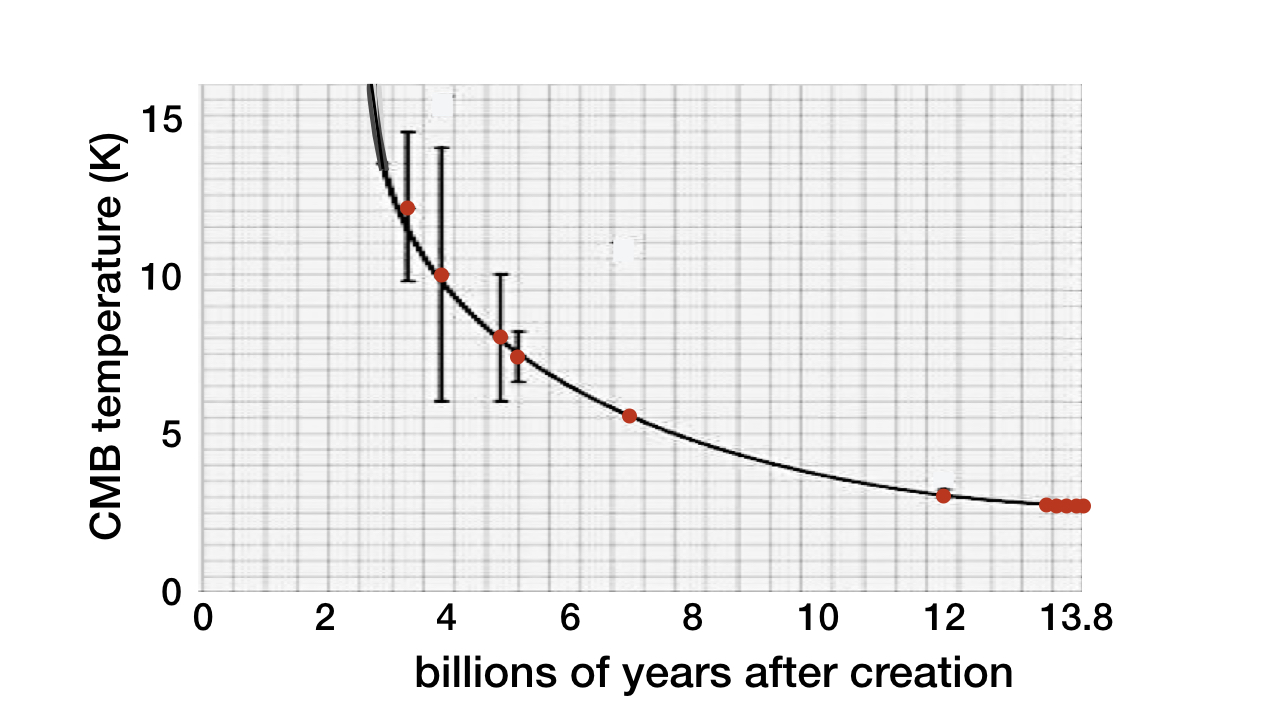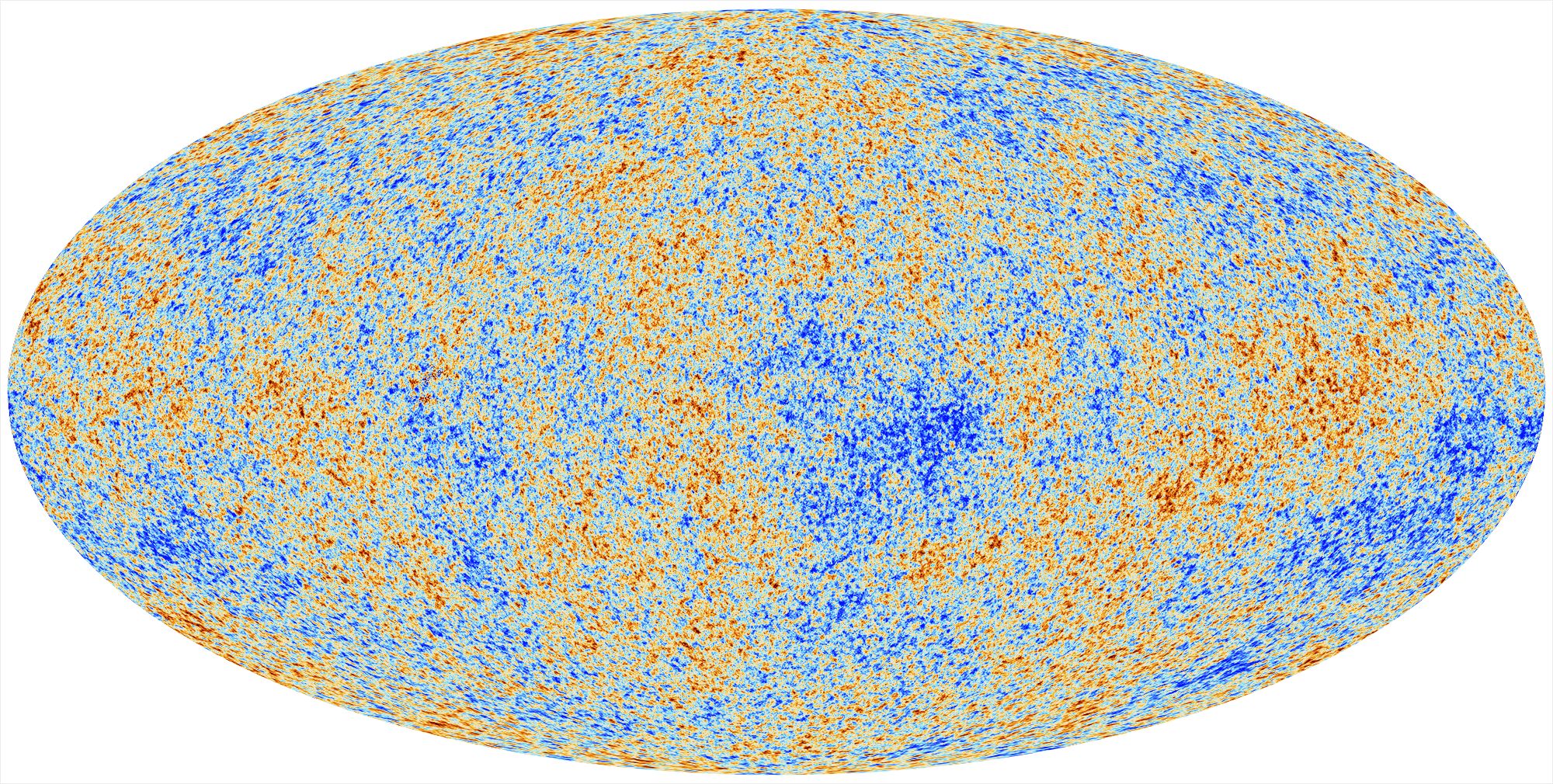Probing the Moment of Creation with Large-Scale Magnetic Fields
In the past one hundred years astronomers have moved from knowing virtually nothing about the origin and history of the universe to possessing a detailed and abundantly confirmed cosmic creation model. I describe this journey and all the observational successes of what is now known as the big bang creation model in my latest book, The Creator and the Cosmos.1
The only time window over which astronomers lack a detailed knowledge of cosmic history are the events that occur in the first millionth of a second after the cosmic creation event. Now they are getting some help, however, from a paradoxical source—extremely large-scale magnetic fields. “Extremely large-scale” is an understatement. In a recent paper2 published in the Astrophysical Journal, astronomers Justin Bray and Anna Scaife from the University of Manchester used measurements of ultra-high-energy cosmic rays to determine the strength of magnetic fields on size scales less than 100 megaparsecs (326 million light-years) across and on size scales greater than 100 megaparsecs across. One hundred megaparsecs is equivalent to the distance between Earth and the center of the Coma cluster of over 1,000 galaxies. (More than ten clusters of galaxies reside closer to us than the Coma cluster.)
Large-Scale Magnetic Fields and the Early Moments of Creation
In the biblically predicted big bang creation model3 the universe begins infinitely or near infinitely hot. This heat means that the four forces of physics (gravity, strong nuclear force, weak nuclear force, and electromagnetism) were united into a single force.
As the universe expands from the cosmic creation event, it becomes increasingly cooler (see figure 1). At 10-43 seconds after the cosmic creation event, the one superforce separates into gravity and the strong-electroweak force. At 10-36 seconds, the strong-electroweak force separates into the strong nuclear force and the electroweak force. At 10-12 seconds, the electroweak force separates into the weak nuclear force and the electromagnetic force. Finally, at 10-6 seconds after the cosmic creation event, the universe has cooled sufficiently that quarks can bind together to make protons and neutrons.

Figure 1: Temperature Measurements of the Universe with Respect to Time after the Cosmic Creation Event. Image credit: Graph was created by the author from published measurements.
At one or more of these transition events, it is possible for some of the free energy released during the phase transitions to be converted into what later becomes large-scale (size scale exceeding 3 million light-years) magnetic fields. Astronomers possess no other conceivable explanation for the possible existence of such large-scale magnetic fields other than their origination in one or more of these very early transition events. Hence, they refer to such magnetic fields as “primordial magnetic fields.”
The potential of primordial magnetic fields to yield a detailed picture of the earliest moments after the cosmic creation event explains why the quest to find and measure primordial magnetic fields has become the latest holy grail of cosmology. There are other reasons why astronomers are excited about primordial magnetic fields. If these fields are as strong as one ten-billionth of a gauss, they would explain the hint of non-gaussianity seen in the Planck map (see figure 2) of the radiation left over from the cosmic creation event (a.k.a. the cosmic microwave background radiation, CMBR). They would also explain the one-millionth-gauss magnetic fields that astronomers see in spiral galaxies as large or larger than our Milky Way Galaxy.

Figure 2: Planck Spacecraft Map of the Cosmic Microwave Background Radiation. The red and orange colors represent very slightly higher temperatures than the blue and green spots. Note the apparently slightly hotter region toward the right center. Image credit: European Space Agency
Latest Measurements of Primordial Magnetic Fields
The Planck map would look very different from what it does if primordial magnetic fields were as strong as a nanogauss (1 nanogauss = a billionth of a gauss). Therefore, there is no doubt that primordial magnetic fields must be weaker than a nanogauss. Only in the last decade have astronomers possessed instruments with the capability of detecting large-scale magnetic fields weaker than a nanogauss.
In 2010, astronomers Andrii Neronov and Ievgen Vovk, based on their nondetection of billion-electron-volt gamma-ray emission from a cascade initiated by trillion-electron-volt gamma rays that they observed in blazars, established that the strength of intergalactic magnetic fields must be greater than 3 x 10-7 nanogauss.4 This nondetection meant that primordial magnetic fields really do exist and, thus, that they will prove to be useful probes of the earliest moments of the history of the universe.
Almost a year ago to this day, astronomers Dylan Sutton, Chang Feng, and Christian Reichardt combined data from the four best maps of the CMBR, namely from Planck, BICEP2/Keck Array, POLARBEAR, and SPTpol. Their analysis of these maps showed that intergalactic magnetic fields on size scales larger than 3 million light-years could not be any stronger than 0.91 nanogauss.5
Now, Bray and Scaife have established a superior upper limit on the strength of primordial galactic fields. They noted that the trajectories of ultra-high-energy cosmic rays will be deflected as they pass through magnetic fields and that the magnitude of the deflection determines the measure of the magnetic field. They also noted that recently published observations from the Pierre Auger Observatory show that ultra-high-energy cosmic rays indeed originate from extragalactic sources.6 Based on the now strongly affirmed assumption that ultra-high-energy cosmic rays originate from sources outside our galaxy, Bray and Scaife determined that for size scales larger than 100 megaparsecs across, the magnetic field strength must be less than 0.07–0.22 nanogauss.7
This new upper limit is 4–12 times superior to any previous measurement. For the first time, astronomers possess a measurement in range of the value—namely 0.10 nanogauss—where implications for cosmic creation models, and especially for the early moments after the cosmic creation event, get interesting. Astronomers are about to determine additional extreme fine-tuning features of the universe that point to supernatural design. These measurements and others that are soon to follow mean that we can look forward to an even stronger evidential case for the biblically predicted big bang creation model and for the exquisite—that is, supernatural—fine-tuning of the universe that makes possible our existence, civilization, and redemption from evil.8
Endnotes
- Hugh Ross, The Creator and the Cosmos: How the Latest Scientific Discoveries Reveal God, 4th ed. (Covina, CA: RTB Press, 2018).
- J. D. Bray and A. M. M. Scaife, “An Upper Limit on the Strength of the Extragalactic Magnetic Field from Ultra-High-Energy Cosmic-Ray Anisotropy,” Astrophysical Journal 861 (July 1, 2018): id. 3, doi:10.3847/1538-4357/aac777.
- Hugh Ross, “Big Bang—The Bible Taught It First!” RTB 101, Reasons to Believe, June 30, 2000, https://www.reasons.org/articles/big-bang-the-bible-taught-it-first. This article also appears as chapter 13 in my book, A Matter of Days: Resolving a Creation Controversy, 2nd ed. (Covina, CA: RTB Press, 2015), 135–44.
- Andrii Neronov and Ievgen Vovk, “Evidence for Strong Extragalactic Magnetic Fields from Fermi Observations of TeV Blazars,” Science 328 (April 2, 2010): 73–75, doi:10.1126/science.1184192.
- Dylan R. Sutton, Chang Feng, and Christian L. Reichardt, “Current and Future Constraints on Primordial Magnetic Fields,” Astrophysical Journal 846 (September 13, 2017): id. 164, doi:10.3847/1538-4357/aa85e2.
- A. Aab et al., The Pierre Auger Collaboration, “Observation of a Large-Scale Anisotropy in the Arrival Directions of Cosmic Rays above 8 x 1018 eV,” Science 357 (September 22, 2017): 12661270, doi:10.1126/science.aan4338; A. Aab et al., “An Indication of Anisotropy in Arrival Directions of Ultra-High-Energy Cosmic Rays through Comparison to the Flux Pattern of Extragalactic Gamma-Ray Sources,” Astrophysical Journal Letters 853 (February 1, 2018): id. L29, doi:10.3847/2041-8213/aaa66d.
- Bray and Scaife, “An Upper Limit,” page 1.
- Hugh Ross, Why the Universe Is the Way It Is (Grand Rapids, MI: Baker, 2008).






